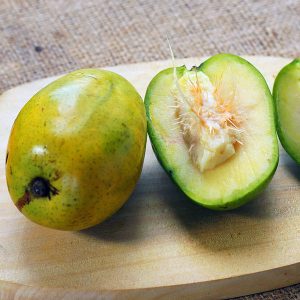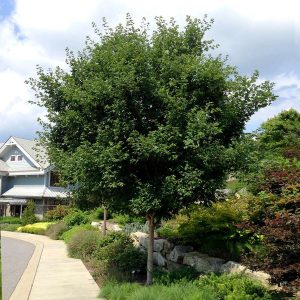What is Knock Out Rose Tree
An abundance of rich blooms, with no maintenance needed: Knock Out Roses have set the standard for bloom color, size, and adaptability. Now, horticulturists have bred a tree with the same characteristics.
The Knock Out Rose Tree has raised the bar for disease resistance, and it’s as carefree as they come. It’s not susceptible to common rose diseases like black spot and mildew. Hardy and reliable, your rose tree will bloom from early spring to the first frost, giving you fluorescent blooms for months.
Plus, this tree form version of your favorite rose means versatility. The Knock Out Rose Tree can be container planted to place beside entryways, on porches and even indoors if temperatures drop. No matter where you place it, though, it’s a unique showcase plant that will set your homescape apart.
Your Knock Out Rose Trees come pruned to promote more branching. More branching means more blooms! And it’s adaptable to various soil types and drought tolerant, too, creating a stunning entryway, pool accent or garden focal point. We prune your Knock Out Roses before we ship them out to give you an explosion of growth when you receive them. Now, you reap the rewards of our hard work and get continuous blooms for six months.
This is the hottest rose introduction in years.
Looking for more roses to add to your collection? Check out our guide to popular types of roses.

How to Grow and Care for Knock Out Rose Tree
Knock Out Rose Tree (Rosa) Growing Requirements
| Hardiness zone | 5-10 outdoors |
Planting
Select a well-drained site in full to partial sun (4 to 8 hours of sunlight per day). If you choose a partial sun location, make sure your roses receive at least 6 hours of direct sunlight per day (afternoon shade is better than morning shade).
First, space 3 feet apart if planting multiple trees. Dig a hole twice as wide and twice as deep as the root ball. Backfill the soil until you have a hole the same size or slightly larger than the container the rose is in. Plant the rose at the same depth as it is in the container. Mulch around the base of the tree to keep competing weeds and grasses from growing.
Watering
Keep Knock Out Roses moist at all times. Water around the roots rather than overhead, and water about once or twice weekly. Mulching will greatly assist with soil moisture retention.
Fertilizing
Fertilize with an organic rose fertilizer once a month.
Pruning
Sterilize your sharp pruning shears with hot water or rubbing alcohol, and always prune at an angle. Start by pruning back a little in the spring after the last hard freeze. Remove dead or old canes at any time.
Knock Out Rose Tree (Rosa) Details
| Common name | Knock Out® Rose Tree |
| Botanical name | Rosa |
| Plant type | Shrubs, Hedges |
| Hardiness zone | 5-10 outdoors |
| Growth rate | Fast |
| Height | 4-7 ft. |
| Width | 2-3 ft. |








